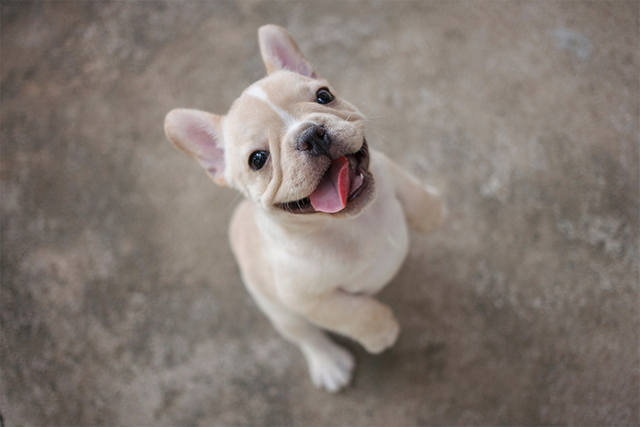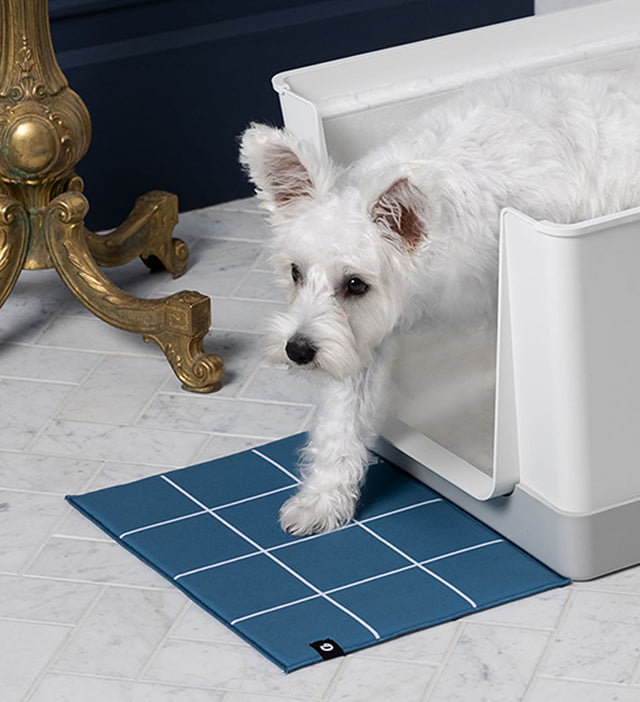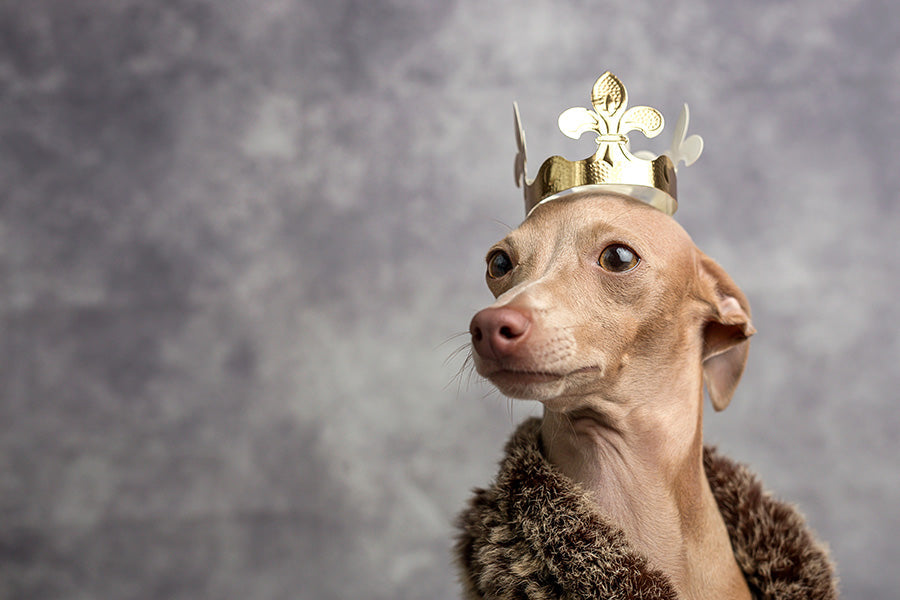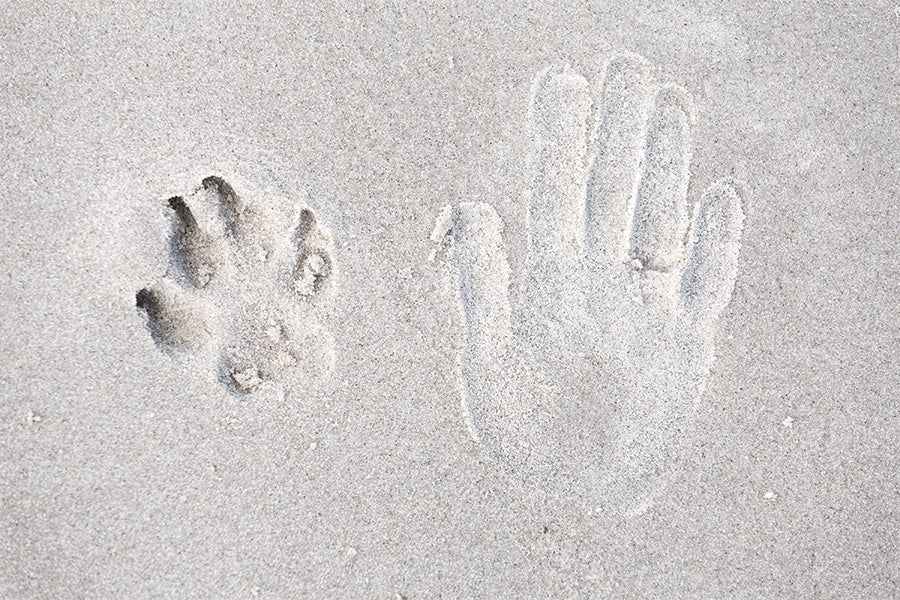Potty Training Your Dog: Three-Day Challenge

Potty training your dog can be a daunting task. It's a crucial step in your pet's life, yet it often comes with challenges. But what if you could achieve this in just three days?
Welcome to our guide on how to potty train a dog in 3 days. This intensive, structured approach aims to help you housebreak your pet quickly and effectively.
We'll provide practical dog training tips and step-by-step instructions. Our goal is to help you achieve fast potty training results, reducing accidents and establishing good habits for your pet.
This guide is perfect for new dog owners, especially those who have recently acquired a puppy or an adult dog. It's also a great resource for those struggling with ongoing potty training issues.
Remember, every dog is unique. While the three-day challenge is a great starting point, it's important to adapt the process to your dog's needs and pace. So, are you ready to take on the three-day potty training challenge? Let's get started.

Understanding the Basics of Potty Training
Before starting the three-day challenge, it's crucial to understand the fundamentals of potty training. Dogs have natural instincts that can help or hinder the process. By leveraging these instincts, you can guide your dog to success.
Consistency and routine are key components of effective potty training. Dogs thrive on predictability, so establishing a consistent schedule is essential. This means taking your dog out at the same times each day to foster familiarity.
Positive reinforcement plays a critical role in encouraging desired behaviors. Rewards such as treats, praise, or playtime can motivate your dog to repeat good habits. Remember, reinforcing the right actions consistently will lead to faster results. Patience is vital, so approach each day calmly and see setbacks as learning opportunities.
Preparing for the Three-Day Challenge
Preparing adequately for the three-day potty training challenge sets the stage for success. Planning ensures the training is uninterrupted and focused. Start by assessing your schedule for three days of dedicated training time.
It's important to understand your dog's current potty habits. This includes noting when they typically need to relieve themselves. Such observations will help tailor the training schedule to your dog's natural rhythm.
Establishing the right mindset is crucial before embarking on this journey. Anticipate challenges but remain positive. Potty training demands patience, so be prepared to reinforce and guide without frustration.
Enlist the help of all household members. Everyone should be aware of the schedule and cues to maintain consistency. This collective effort reinforces the training structure and prevents confusion for your dog. Here’s a checklist to ensure you’re ready to start:
-
Determine dedicated potty times based on your dog’s behavior.
-
Notify all household members of the schedule.
-
Prepare mentally for the process and remain patient.
Choosing the Right Time and Setting
Selecting the right time for this challenge is essential. Opt for a period when your schedule allows for focus and supervision. Vacations or long weekends can be ideal, providing ample time for concentrated training.
Consider choosing a quiet and consistent environment. The setting should be free from distractions to help your dog focus. A familiar area reduces stress, making the process smoother.
Gathering Necessary Supplies
Having the right supplies on hand is crucial for success. Essentials will keep the process smooth and manageable. Gather the supplies in advance to prevent last-minute scrambles. Here's a list of necessary items:
-
Treats and rewards for positive reinforcement
-
Cleaning supplies for accidents
-
A leash to guide to the potty area
-
A timer to stay on schedule
Ensure you have enough supplies to last the three days. Being prepared with these essentials helps minimize stress and supports a structured, effective training session.

Day 1: Establishing the Foundation
Day one is all about setting a solid foundation for successful potty training. Your primary goal is to establish routines and introduce necessary concepts to your dog.
Start the day with a consistent routine. Feed your dog at the same time and take them to the designated potty area after meals. This helps link feeding times with potty times.
Maintain a calm and patient demeanor throughout the process. Dogs are sensitive to our emotions and can pick up on stress. Stay relaxed to encourage a positive environment.
Every successful potty attempt should be met with immediate rewards. Treats and verbal praise reinforce the behavior you want to encourage. The immediate connection between pottying outside and rewards is crucial.
Keep a close eye on your dog to catch any signs they might need to go. The earlier you can recognize these cues, the better you can guide them.
If accidents happen, remain patient and avoid punishment. Clean up thoroughly and refocus on the routine. Setting a positive tone from day one helps build trust and confidence.
Creating a Consistent Schedule
A consistent schedule forms the backbone of effective potty training. Begin by noting times your dog typically needs to go. Align these natural habits with structured potty breaks.
Designate specific times for meals, walks, and potty breaks. Predictability in these areas helps your dog adapt quickly. Use a timer if necessary to maintain consistency.
Throughout the day, lead your dog to the designated potty area at these times. This reinforces the schedule and helps them learn when and where to go.
Be patient as your dog adapts to the new routine. With consistent practice, they will learn to associate specific times with bathroom breaks. Remember, every dog learns at their own pace.
Introducing the Potty Area
Introducing your dog to a designated potty area is key on day one. This place should remain consistent throughout the training.
Begin by taking your dog to this area at scheduled times. Encourage them with a specific command or cue word to start the process. Consistency with commands helps dogs understand what you expect.
Ensure the potty area is devoid of distractions. Keep it calm and focused, allowing your dog to take their time. A well-chosen spot encourages consistent use and reinforces your guidance.
After your dog relieves themselves in the designated area, reward them immediately. Quick reinforcement solidifies the behavior and makes the connection clear. Over time, this spot becomes naturally associated with potty time.
Recognizing and Responding to Cues
Recognizing your dog's cues is crucial. Every dog has unique signals that indicate they need to go. These signs can include sniffing, circling, or whining.
Spend time observing these signals closely. Familiarity helps you anticipate needs, preventing accidents before they happen. Your prompt response to cues builds a strong habit.
When you see a cue, gently guide your dog to the potty area. Keep your voice calm and encouraging. Following through reinforces their learning and supports the routine you've established.
Continue rewarding with praise and treats after successful bathroom trips. Positive reinforcement helps solidify the relationship between cues and the behavior you desire. This cycle promotes understanding and cooperation between you and your dog.
Day 2: Reinforcement and Routine
Day two is crucial for reinforcing the behaviors introduced on day one. Maintaining momentum ensures your dog continues to understand and comply with training expectations.
Begin with the same routines established previously. Consistency is essential in helping your dog adjust, so adhere to the schedule you set. Your dog will start to anticipate potty breaks based on the routine.
Increase the focus on reinforcing good behavior. After each successful potty break, offer rewards promptly. The continuation of positive reinforcement links behavior to rewards in your dog's mind.
Observe your dog closely for any changes in their cues. They might start showing signs more confidently. Acknowledging and acting on these cues promptly helps strengthen their training.
Review your progress from day one. Note any improvements or patterns emerging in your dog’s behavior. Use this knowledge to adjust your approach as needed.
If accidents occur, resist frustration. Every dog learns at their own pace, and patience is vital. Focus instead on the positives and how far you've already come.
Building on Day 1's Progress
Recognize the progress your dog made on day one and use it as a foundation. Reinforce the same cues and routines consistently to deepen understanding.
Encourage autonomy by allowing your dog to guide you to the potty area when they need to go. This strengthens their confidence and builds trust between you both.
Incorporate a variety of rewards beyond treats. Verbal praise, petting, and playtime can also serve as effective reinforcements. Tailor your rewards to what your dog values most.
Monitor improvements in routine adherence. Perhaps your dog is responding faster to cues, or they require fewer accidents as prompts. Use these observations to adjust and fine-tune the training experience.

Handling Accidents with Positivity
Accidents are bound to happen during the potty training process. When they do, maintain a positive attitude to prevent discouraging your dog. Punishment can lead to confusion and stress.
Immediately clean up any messes and ensure the area is odor-free. This step prevents your dog from associating the spot with an acceptable place to potty. An enzyme cleaner is effective in removing residual scents.
Refocus on positives and reinforce desired behaviors. Observe and remind your dog of the proper process for potty breaks gently. Encourage consistent use of the designated potty area.
Applaud their efforts, not just results. Even partial progress is a step forward. Your support and positivity make them feel secure and understood, which fosters continuous learning and growth.
Day 3: Solidifying Good Habits
The third day of the potty training challenge is all about reinforcing and stabilizing the positive habits cultivated over the past few days. Your dog is beginning to understand the routine, but consistency remains key.
Continue to maintain the established schedule with the same level of dedication. Deviating too soon can confuse your dog and set back their progress. Consistent reinforcement assures your dog of what's expected.
As your dog gains confidence, gradually allow them more independence. This freedom should be supervised, ensuring they still follow the potty schedule closely. Supervision helps prevent accidents and reinforces good habits.
Celebrate each success with enthusiasm. Joyful reinforcement encourages your dog to repeat good behavior. Use varied rewards to keep your dog engaged and eager to perform well.
Watch for cues with a trained eye. Your dog may develop new signals to indicate their needs. Recognize and promptly react to these cues, reinforcing their effort to communicate effectively with you.
Reflect on how far both you and your dog have come. Acknowledge the efforts from both parties. Establish a routine that maintains the progress achieved during these three days, setting the foundation for long-term success.
Gradually Increasing Freedom
As your dog shows improvement, begin to increase their freedom gradually. Allow them more space to explore, but keep a watchful eye to prevent mishaps. This approach builds their confidence in the routine.
Monitor your dog's behavior in new environments, ensuring they can still follow their potty training knowledge. Step by step, increase their time away from you, but remain nearby for guidance when needed.
Encourage independence without risking regression. Independence should be a reward for demonstrated understanding, not a test of their limits. Ensuring freedom is balanced with supervision leads to greater autonomy over time.
Preparing for Post-Challenge Success
Preparing for life beyond the three-day challenge involves planning for consistency in routine. Consistency is key to transitioning from intensive training to a sustainable everyday routine. Plan for ongoing reinforcement and make small modifications as necessary.
Establish a normal schedule that mirrors the intensive training pattern but is adapted to your household routine. Ensure your dog understands that the expectations remain the same, despite fewer, spaced-out breaks.
Think of the three-day plan as the foundation for a lifetime habit. Maintain the positive reinforcement, even if milestones have been reached. Celebrate your dog's continued successes to encourage ongoing good behavior.
Troubleshooting Common Challenges
Potty training isn't always smooth, and challenges may arise. Stay calm and patient when facing these obstacles. Your attitude affects your dog’s behavior and progress.
Accidents can and will happen. Clean up accidents promptly with pet-safe cleaners to prevent lingering odors that may attract your dog to return to the spot. Avoid punishment as it can increase fear and confusion.
Some dogs might take longer to adapt. If progress stalls, review your methods and identify areas that may need more focus. Consistent effort and gradual adjustments can help move past sticking points.
Consider if external factors impact training success. Diet, water intake, and even changes in the environment can affect a dog’s routine. Evaluate these elements and make necessary changes to support your dog's training.
Dealing with Setbacks
Setbacks are natural in any training process. View them as learning opportunities rather than failures. Revisit foundational training steps to reinforce learning if accidents occur more frequently.
Remain composed and supportive. Your dog's confidence grows from positive interactions, especially after a setback. Reaffirm previous training with the same patience shown at the start of the process.
Adjusting the Approach for Different Dogs
Different breeds and individual dogs may respond to training uniquely. Customize your approach based on your dog's unique temperament and needs. What works for one dog may not work for another.
Consider age, breed-specific traits, and previous experiences when altering your strategy. Older dogs or rescues might require a gentler introduction to the routine. Adaptability in methods ensures each dog receives the most effective training possible.
Maintaining Potty Training Long-Term
Ensuring your dog continues to use good potty habits involves ongoing commitment. Consistency and structure remain key even after the initial training period ends. Your dog thrives on routine; maintaining it reinforces their learning.
Adjust their schedule as they grow. The need for frequent potty breaks decreases as your dog matures. Gauge your dog’s needs and adjust the routine to fit their changing patterns.
Monitor behavior and remain vigilant for signs of regression. Addressing issues immediately prevents bad habits from forming again. Keep communication open and calm with all family members regarding the expectations.
Don’t overlook the importance of rewards. Occasional treats and praise remind your dog of positive behavior reinforcement. It's an effective way to maintain good habits and strengthen your bond.

The Role of Ongoing Reinforcement
Even a well-trained dog benefits from regular reinforcement. Positive reinforcement solidifies your dog's understanding of what’s expected. Praise and treats should be given for correct behavior, even long after training.
Consistency in reinforcement prevents confusion. Avoid complacency and continue the same cues or commands used during training. Constant interaction reinforces the rules and promotes continued obedience to housebreaking protocols.
Transitioning to Normal Routines
Slowly ease your dog into their everyday schedule. Gradually adjust potty breaks to accommodate your daily activities. This transition helps both you and your dog adapt smoothly to routine changes.
Remain attentive to your dog's signals and needs during this period. Sudden changes can confuse pets and lead to setbacks. Give them time to adjust to new patterns while keeping core routines in place.
Celebrating Your Success
Completing the three-day potty training challenge is a significant accomplishment. You and your dog have worked hard to establish reliable habits. Celebrate these achievements, and recognize the progress made along the way.
Your dedication has laid a strong foundation for lifelong success. This is an opportunity to strengthen your bond with your dog through mutual trust and understanding. Enjoy the newfound comfort and confidence as you both navigate future adventures together.
Additional Resources and Support
For continued success, consider consulting dog training books or online forums. Engaging with a supportive community can provide valuable insights and encouragement. If challenges persist, professional trainers or behaviorists offer specialized guidance tailored to your dog's needs. Embrace these resources to enhance your training journey. Above all - consider Doggy Bathroom!
👉 Learn how the Doggy Bathroom makes training your dog simple and stress-free.



